Wi kuzt zih dos wymysiöeryś? This is how Wymysorys language looks like. In English, this sentence means "how do you say that in Wymysorys language?". This language is closely tied to the town of Wilmowice in Poland and its unique culture. A modern museum has been built in Wilmowice thanks to funding from the EEA and Norway Grants, which will help preserve this culture.
Just a quick 20-minute drive from both Bielsko-Biała and Oświęcim, straddling the border of Silesia and Lesser Poland, lies the charming gmina of Wilamowice. With a population of 17,000 and its main town housing just over 3,000, it might seem like any other small Polish town. But don't be fooled! Wilmowice is one of a kind. Let me tell you why.
Who are Vilamovians
Vilamovians are the inhabitants and people coming from Wilamowice.
"Official records tell us that Wilamowice was established in the 13th century. But where did the original settlers come from? Based on the local culture and language, we believe they were from the Netherlands. I suspect there might have been influences from other cultures as well" – said dr. Tymoteusz Król, an ethnolog and folklorist affiliated with the Institute of Slavic Studies at the Polish Academy of Sciences, in an interview with Polish Radio Katowice on July 2nd.
Article on the website of Polish Radio Katowice (PL)
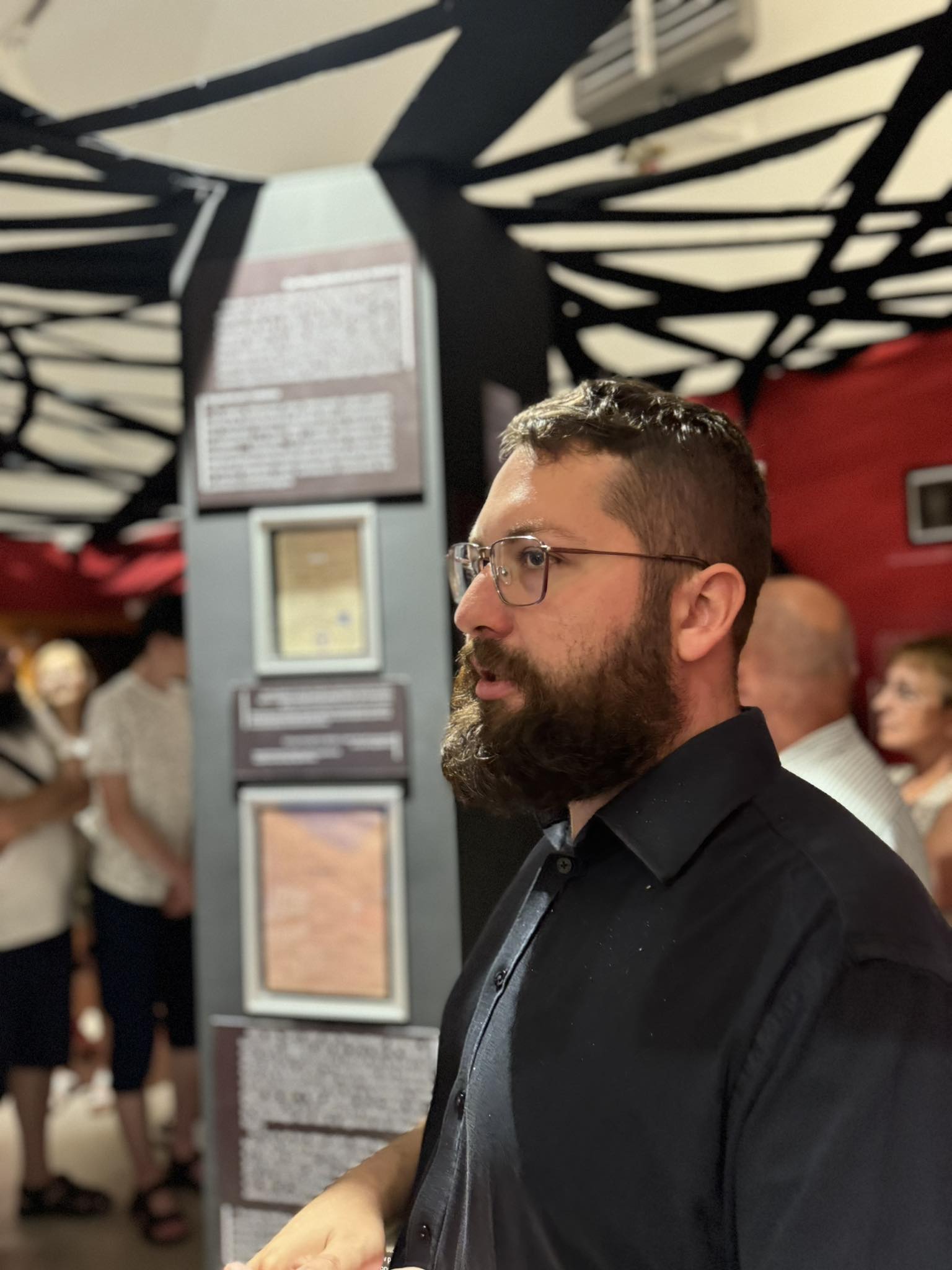 Dr. Tymoteusz Król (source: Museum of Wilamovian Culture in Wilamowice)
Dr. Tymoteusz Król (source: Museum of Wilamovian Culture in Wilamowice)
Dr. Król is currently the most famous and most active scientist who deals with the history of Wilamowice and Vilamovians, their culture and language. Despite his young age, he has already written several books about songs, costumes, language and persecution of Wilamowice inhabitants after World War II.
"A widespread legend among the people of Wilamowice claims that the town’s first settlers were of Flemish, Dutch, Frisian, Anglo-Saxon, or Scottish descent. However, historical evidence suggests they were more likely from the region of the Middle Rhine and Main rivers" – says Wikipedia in the article about Wilamowice.
Wikipedia article about Wilamowice (PL)
From Wymysoü to Wilamowice
The exact truth remains elusive. However, it’s commonly believed that the Oświęcim dukes invited the settlers.
These pioneers established Stara Wieś, naming it Wymysdiöf, which translates to "Wilhelm's village" in the local Wilamowice language, after their leader. They subsequently founded the nearby settlement that would evolve into present-day Wilamowice, calling it Wymysoü or "Wilhelm's eye". Weaving and trade were their primary occupations.
Initially under Bohemian rule, the settlement transitioned to Polish dominion in the 15th century. Following the First Partition of Poland in 1772, Wilamowice fell under Habsburg control. After World War I, it briefly returned to Poland for two decades, only to be annexed by the Third Reich during World War II. Finally, in 1945, it was restored to Poland.
Despite these historical shifts, the people of Wilamowice have steadfastly preserved their unique identity, most notably through their distinct language. The 2021 National Census revealed that 85 individuals declared their national-ethnic affiliation as Vilamovian, with 72 residing in the Wilamowice commune, 2 in other communes of the Bielsko County, 4 in Łódź, and 3 in Warsaw.
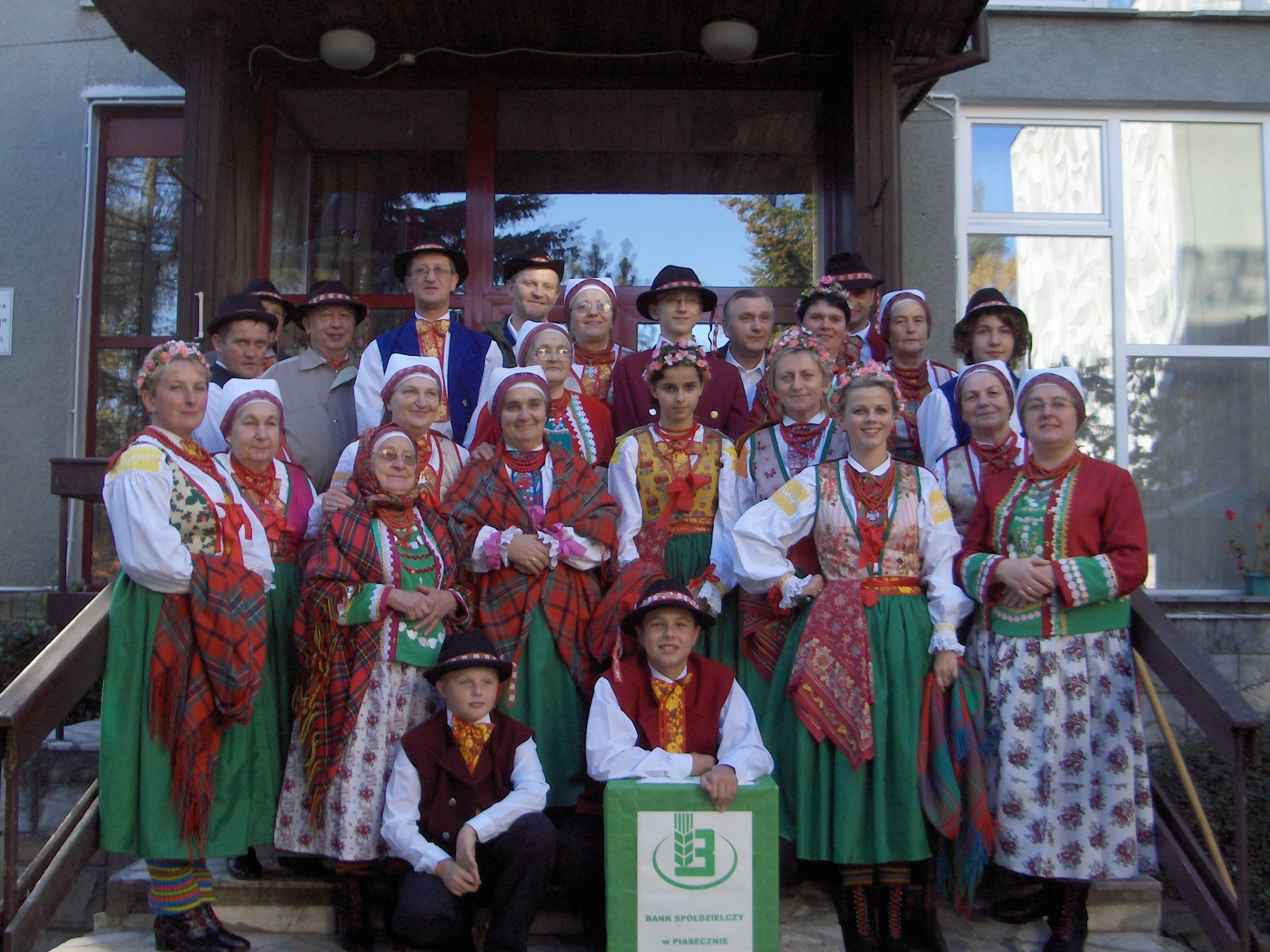 Members of the "Wilamowice" Song and Dance Ensemble in regional costumes (photo: Wymysojer, under CC BY-SA 4.0 license)
Members of the "Wilamowice" Song and Dance Ensemble in regional costumes (photo: Wymysojer, under CC BY-SA 4.0 license)
Post WWII ordeal
Despite its Germanic roots and similarities to German (consider the numbers "ås, cwe, drȧj" for german "eins, zwei, drei"), the Wymysorys language has been significantly influenced by Polish over the years.
UNESCO has categorized this language as "severely endangered" while other research suggests it's on the brink of extinction.
The reasons for this decline are complex, but the period immediately following World War II proved to be particularly challenging for the Wilamowice people."
"When Red Army soldiers entered the town and heard the local language, they mistakenly believed they were encountering Germans. Consequently, they committed atrocities, raping women and shooting men indiscriminately. These horrific events left an indelible dark mark on the history of Wilamowice" – says Tymoteusz Król in an article on bielskirynek.pl.
Article on the website bielskirynek.pl (PL)
The Polish communist government initially prohibited the use of the Wymysorys language. This was partly because of the negative stereotype that the Germans had imposed on the people of Wilamowice. Despite the fact that very few Wilamowice residents had declared German nationality before World War II, the Nazi authorities classified most of them as Germans on the Volkslist. This was a deliberate attempt to claim these lands as German territory.
 The text of the ban on using the Wilamowski language and wearing Wilamowski costumes, which was to be read in April 1945 in the local church (photo: Kamil Czaiński, CC BY-SA 4.0 license)
The text of the ban on using the Wilamowski language and wearing Wilamowski costumes, which was to be read in April 1945 in the local church (photo: Kamil Czaiński, CC BY-SA 4.0 license)
Following the war, accusations of collaboration with the German occupiers led to widespread persecution of the Wilamowice community. Many families were forced from their homes, and dozens were sent to labor camps, both in the Soviet Union and within Poland. In 1945, the use of the Wymysorys language and traditional attire was banned. While these repressions eventually ceased, they had a devastating impact on the language. Fearful adults stopped teaching their children Wilamowice and abandoned the language themselves. This lack of continuity has led to its near extinction.
"Only about ten elderly individuals remain who acquired Wymysorys as their native language. Additionally, there are hundreds more who have passive knowledge but are hesitant to speak due to past persecution during the communist era. However, thanks to revitalization efforts, we have successfully formed a group of approximately 50 young people who are fluent in Wymysorys" - says in an article on the website rp.pl. Justyna Majerska-Sznajder, president of the Vilamovians Association and director of the newly opened Museum of Wilamovian Culture in Wilamowice.
Article on the website rp.pl (PL)
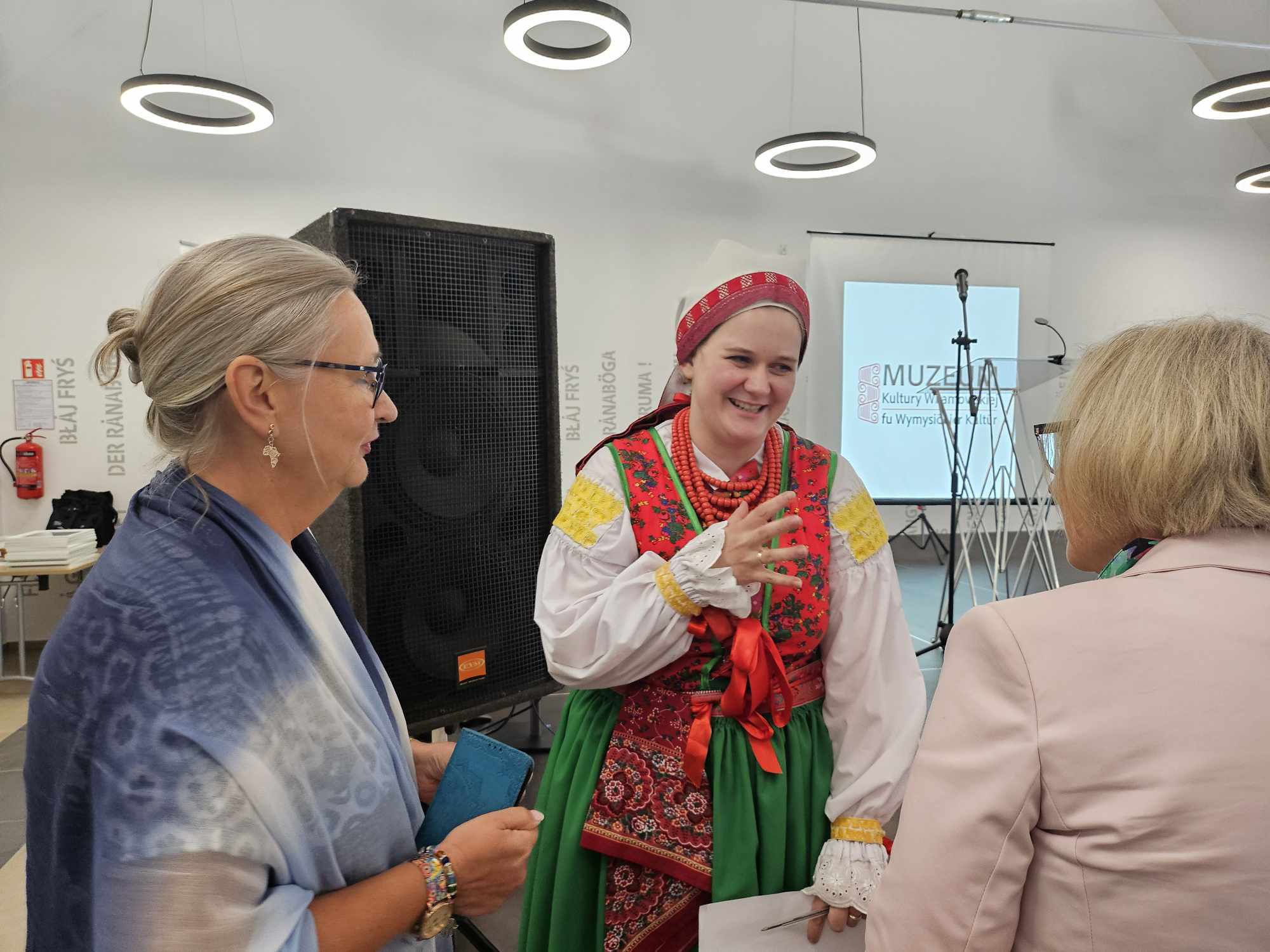 Director of Museum of Wilamovian Culture in Wilamowice Justyna Majerska-Sznajder in a regional costume (source: Museum of Wilamovian Culture in Wilamowice)
Director of Museum of Wilamovian Culture in Wilamowice Justyna Majerska-Sznajder in a regional costume (source: Museum of Wilamovian Culture in Wilamowice)
Love for the local community
Driven by a love for their local heritage, a group of passionate individuals, united under the Vilamovians Association, have spearheaded the revival of the Wymysorys language. There is hope that their efforts will be successful.
Firstly, on March 20, 2024, members of the parliamentary committee for national and ethnic minorities pledged to introduce a legislative bill that would grant the Wymysorys language regional recognition.
Secondly, a tangible sign of progress is the opening of the Museum of Wilamovian Culture in Wilamowice in early July. This institution was made possible through funding from EEA and Norway Grants.
"Revitalizing the Wymysorys language is a cornerstone of our museum's mission. We will be offering language classes and workshops designed to help local residents reconnect with their ancestral tongue. However, we welcome everyone to participate, including newcomers to Wilamowice and those with a keen interest in this unique Germanic language" - says the director of the Museum of Wilamovian Culture in Wilamowice Justyna Majerska-Sznajder, in an article on the museum's official website.
Article on the website muzeum.wilamowice.pl (PL)
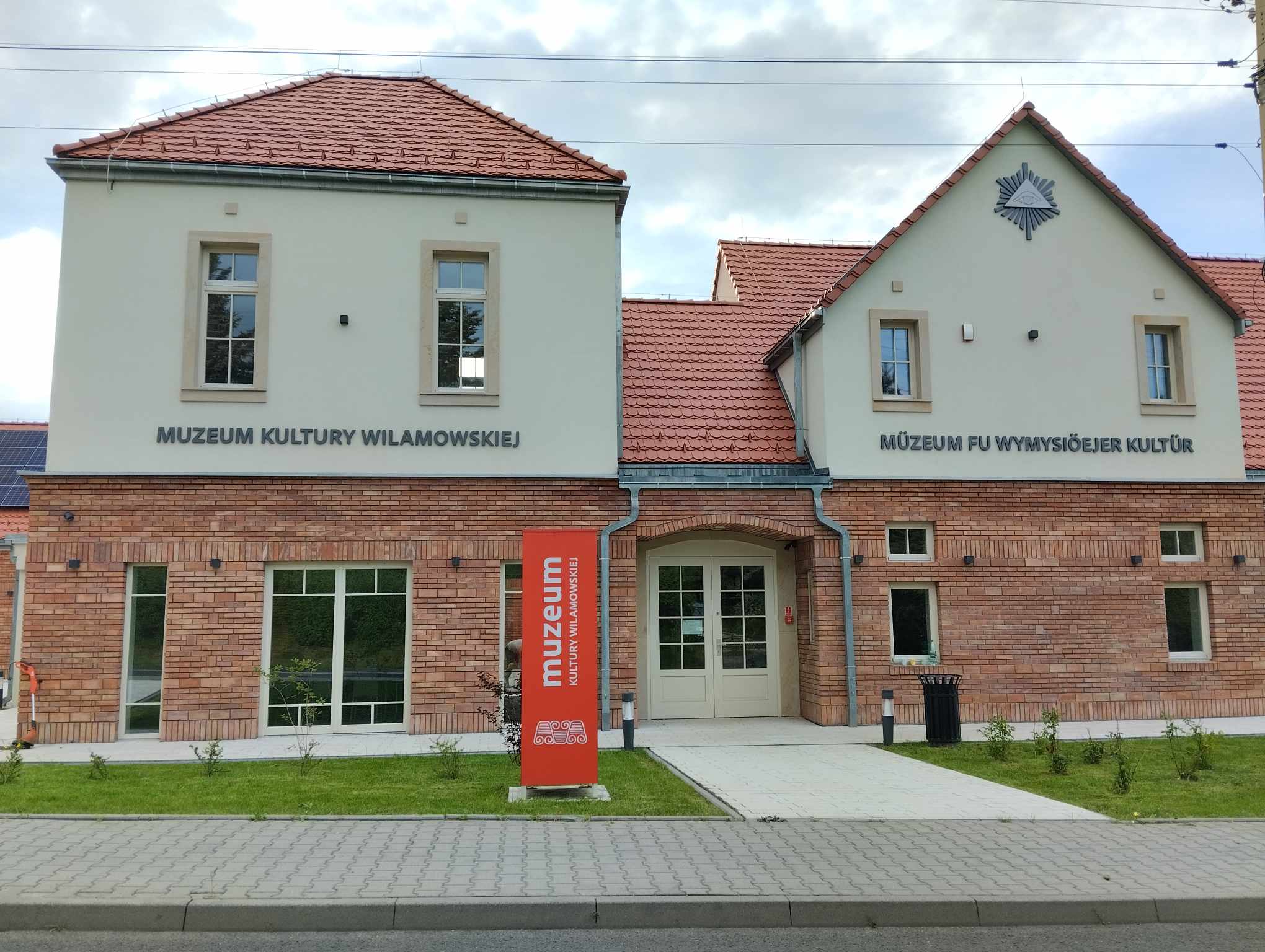 Museum of Wilamovian Culture in Wilamowice (source: Museum of Wilamovian Culture in Wilamowice)
Museum of Wilamovian Culture in Wilamowice (source: Museum of Wilamovian Culture in Wilamowice)
The director kept her promise. Since July 10th, students in grades 6-8 have been attending intensive summer courses in the Wymysorys language. This accelerated program will prepare them to join intermediate-level classes at the start of the school year.
The high attendance at the Open Days on July 6th and 7th, 2024, with 1000 visitors, underscores the museum's significance to the local community. The event offered a variety of activities, including self-guided and guided tours of the permanent exhibition, talks on Wilamowice costumes, language, history, and herbalism.
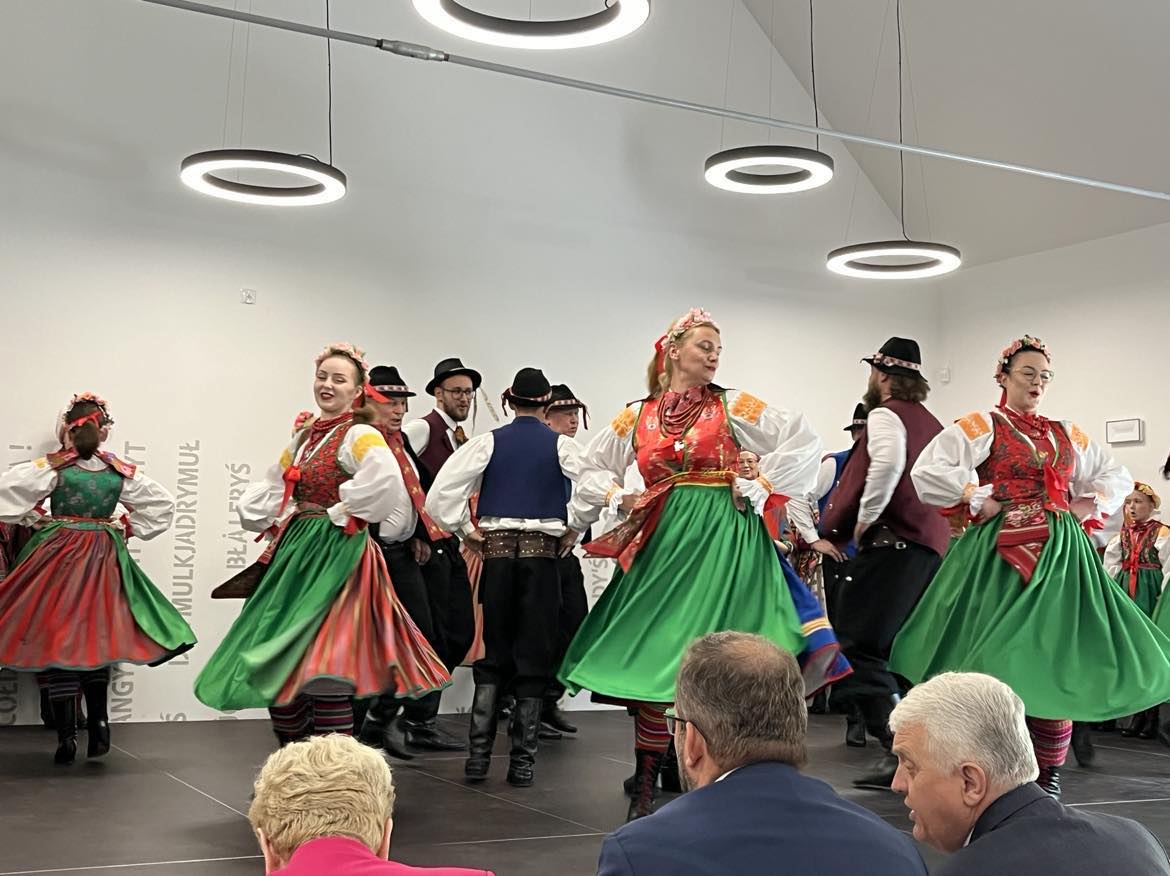
Regional dance show during the museum's Open Days (source: Museum of Wilamovian Culture in Wilamowice)
What you can see at the Museum of Wilamovian Culture
The highlight of the museum is the permanent exhibition "The People of Wilamowice and Their Neighbors". This captivating display offers a comprehensive look at the region's history, from its founding to the present day. Visitors can admire authentic local crafts, unique costumes from Wilamowice and neighboring villages, and a meticulously recreated room showcasing the area's distinctive architectural style.
"The permanent exhibition aims to highlight the unique identity of the Wilamowice community, distinct from their Polish and formerly German neighbors. Through language, attire, customs, and a strong sense of community, the exhibition showcases what sets the Vilamovians apart. To fully appreciate this unique group, it is essential to contrast them with their neighbors. Therefore, the exhibition also presents the folk costumes of neighboring villages such as Stara Wieś, Dankowice, Pisarzowice, Hecznarowice, Zasole Bielańskie" - emphasizes the director of the Museum of Wilamovian Culture in Wilamowice.
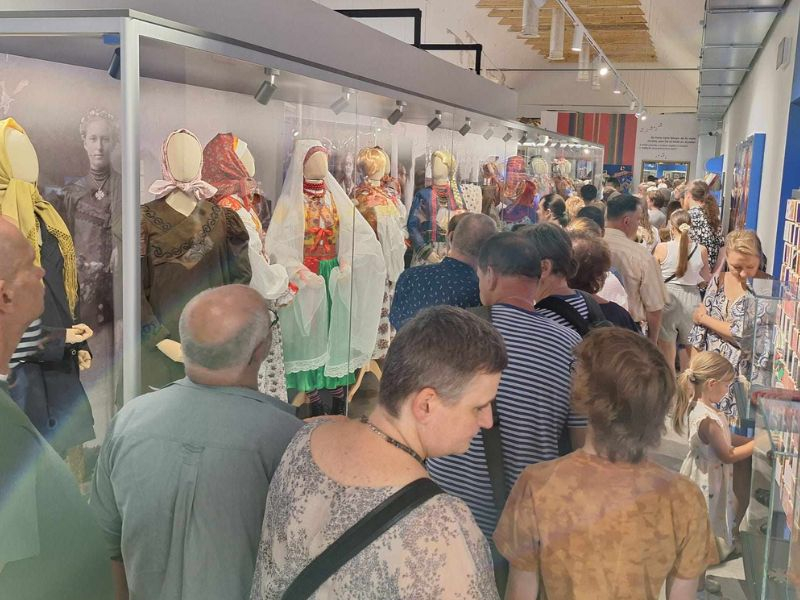
Participants of the museum's Open Days (source: Museum of Wilamovian Culture in Wilamowice)
The permanent exhibition will be complemented by a series of rotating displays. Currently, the museum is showcasing a collection of harmoniums by Rafał Piskorek. Beyond exhibitions, the museum is committed to research, workshops, and community-building initiatives.
The museum is a modern space that celebrates local heritage. We encourage you to visit and experience the museum firsthand, with guided tours led by Dr. Tymoteusz Król.
For more information, including opening hours and events, please visit museum's webiste.
The Little Prince in Vilamovian
To conclude, I invite you to enjoy a passage from The Little Prince, translated into Vilamovian.
"Wi'h hot zȧhs jür, zoh yh ȧmöł ȧ wunderśejn obrozła y ȧm bihła fum Ürpuś, wo his „Ejwerławty kistiöeryja”. S'śtełt ȧ boȧyter für, wo zy śłung ȧ roüpfi"
What does it mean?
"Once, when I was six years old, I saw a marvellous picture in a book on rainforests called Real-Life Stories. It depicted a boa constrictor swallowing a wild animal"
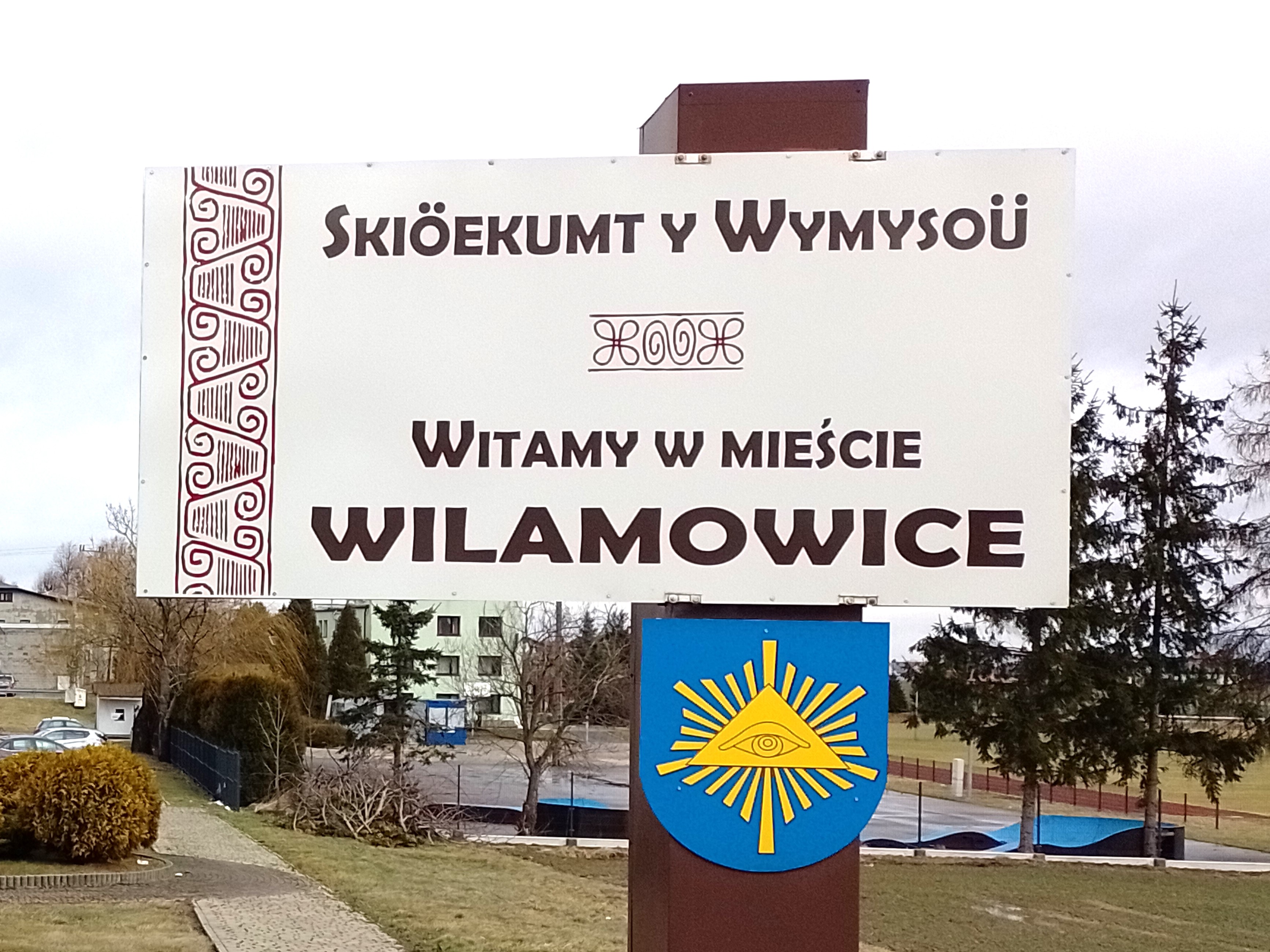 Bilingual sign at the entrance to Wilamowice (photo: Kamil Czaiński, CC BY-SA 4.0 license)
Bilingual sign at the entrance to Wilamowice (photo: Kamil Czaiński, CC BY-SA 4.0 license)
The project "Establishment of the Museum of Wilamovian Culture in Wilamowice - Construction of Museum of Wilamovian Culture" has a total value of PLN 8.5 million. It is co-funded by the EEA and Norway Grants through the Culture Programme. The Norwegian partner in this project is the Department of Linguistics and Scandinavian Studies at the University of Oslo.
About the article
The article was written by Paweł Nowak (Communication and Promotion Unit, Department of Assistance Programmes, Ministry of Development Funds and Regional Policy)

